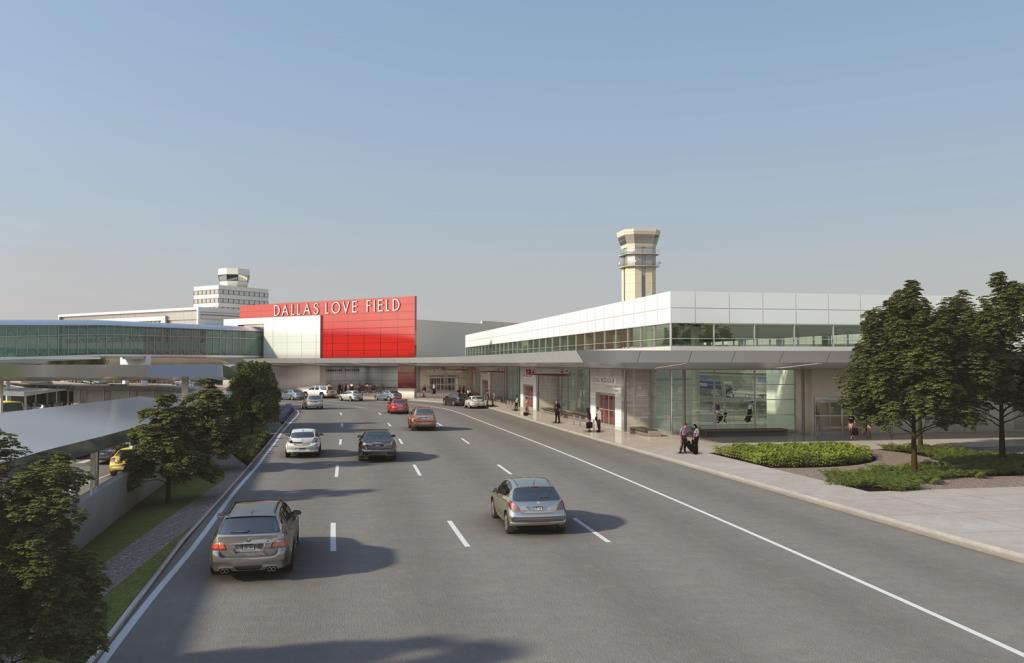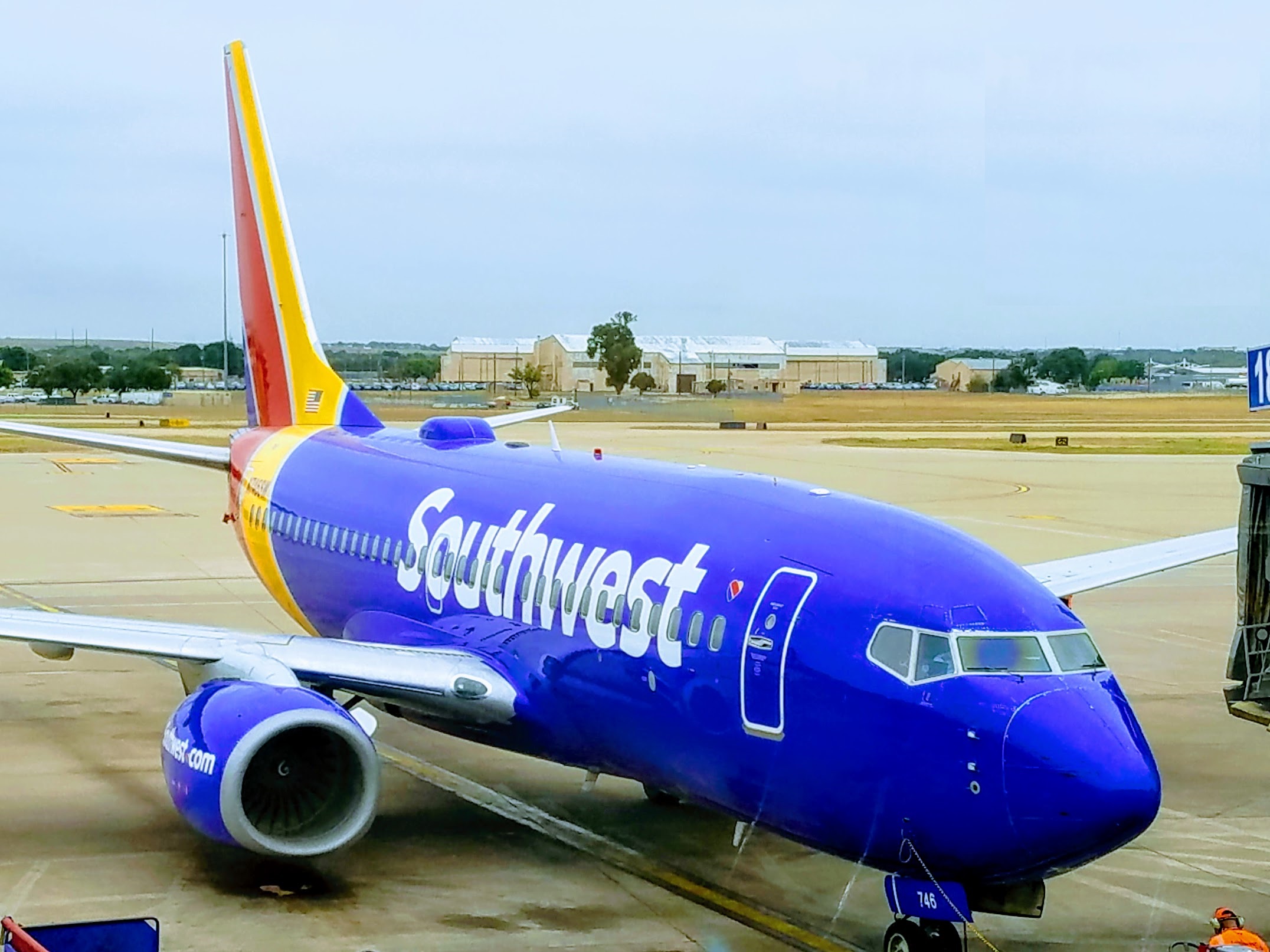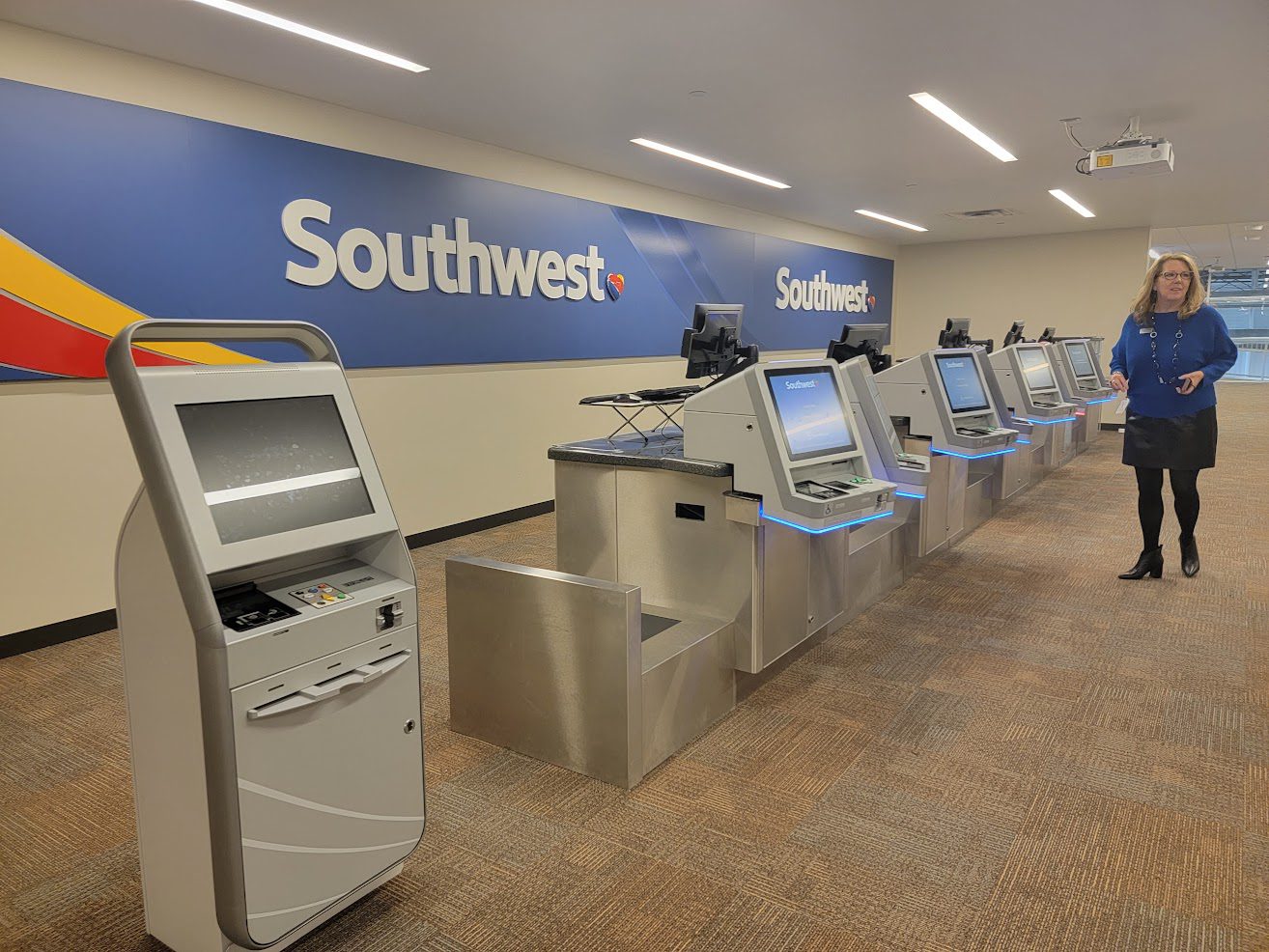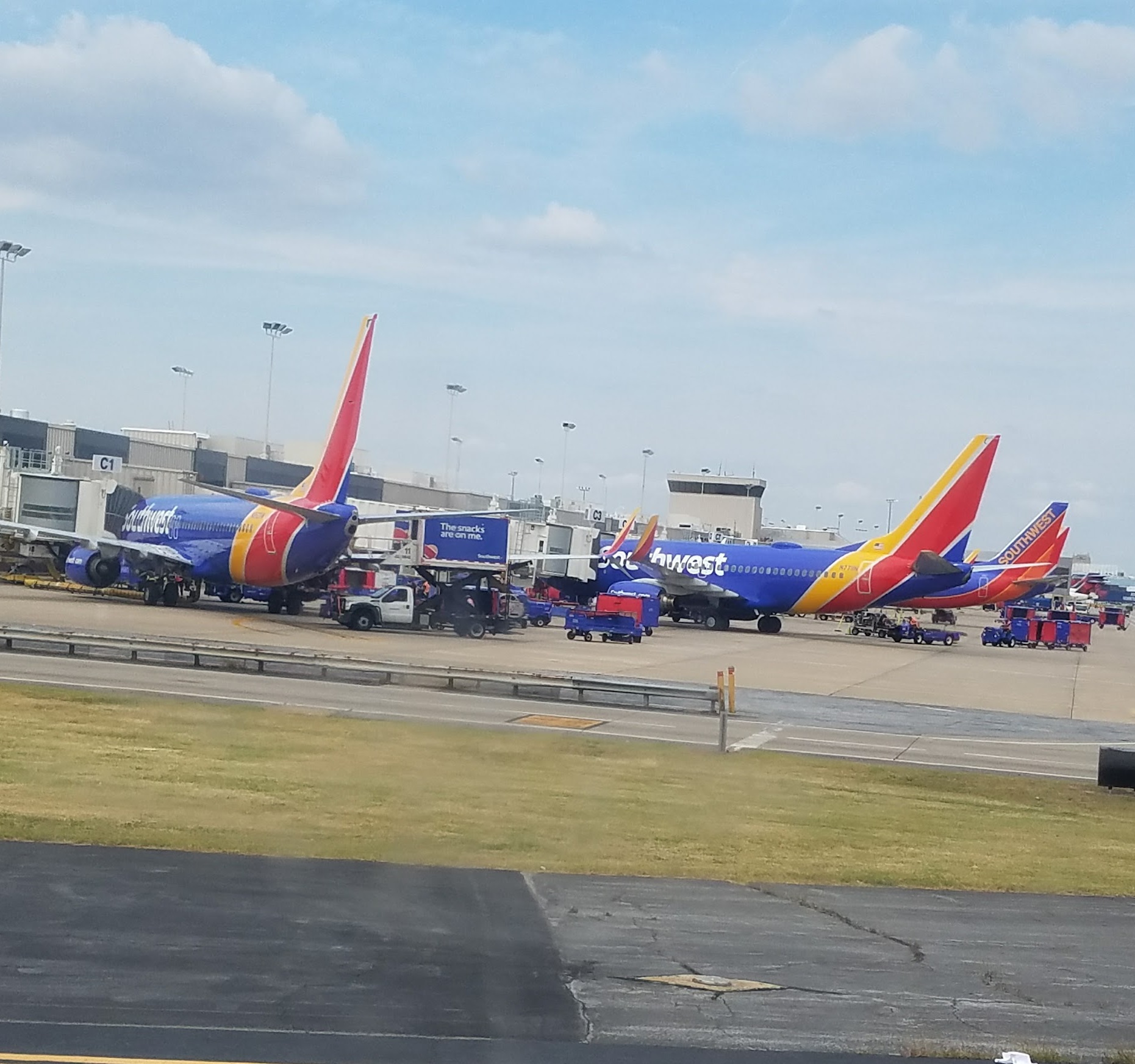The repeal of the Wright Amendment marked a turning point for Dallas Love Field and Southwest Airlines, reshaping the airline’s route network and operational strategy. A recent study published in Manufacturing & Service Operations Management by Vishal Ahuja, Yasin Alan, and Mazhar Arıkan finds that it was hugely beneficial for consumers.

New Non-stop Flights Reduced Travel Times
The Wright Amendment, enacted in 1979, restricted nonstop flights from Love Field to most U.S. destinations, effectively channeling long-haul traffic to Dallas-Fort Worth International Airport.
When Southwest Airlines launched, a key element of its strategy to pull traffic from the roads and onto its planes was use of the close-in Dallas airport. Existing carriers had agreed to shift their operations tot he new DFW airport, however Southwest was bound by no such agreement. Other airlines sued to stop them, but couldn’t, so they turned to Congress to competition.
Initially Southwest could fly only to contiguous states, but that was relaxed over time. The eventual repeal allowed Southwest Airlines to introduce nonstop service to major destinations, slashing travel times for local passengers by an average of 79 minutes for new destinations.
That also meant fewer long delays (roughly speaking, reducing from two flights to one to reach a destination cuts in half the risk of delay and cancellation). However, as Love Field traffic grew, passengers traveling to previously-allowable short haul non-stop destinations were made slightly worse off from the congestion.
The authors developed innovative metrics—”route inefficiency” and “route resilience”—to analyze the impact of route changes. These metrics revealed how factors like travel distance, airport congestion, and itinerary structure shaped the outcomes of the repeal. For example, introducing nonstop flights not only benefited direct passengers but also improved connections to other destinations by optimizing layover patterns.

New Anti-Competitive Barriers Were Erected
The authors’ conclusion about the benefits of Wright Amendment repeal areundoubtedly correct, but the situation at Dallas Love Field is a bit more complicated.
- As part of the 2006 five party agreement that led to phasing out Wright Amendment restrictions by 2014, the number of gates at Love Field was legally reduced from 32 to 20. That’s left Southwest with a virtual monopoly at the airport, controlling 18 of 20 gates. (Southwest loved the increased control of Love Field, while American Airlines loved that Love Field flights would compete less with their own DFW service.)
- Southwest has also been unable to expand to DFW airport, because under the agreement starting new service at DFW would require relinquishing gates at Love Field.

On net, we’ve seen significant passenger growth at Love Field since the repeal of Wright Amendment restrictions, despite reduced airport capacity. At the same time, we’ve also seen even greater growth at DFW airport (in number of passengers, but not in percentage terms), where there were no such restrictions. Some of the Love Field passenger growth would likely have happened anyway.
The legally mandated reduction in Love Field capacity led to an interesting takings case. The old Legend Airlines 6-gate terminal on Lemmon Avenue was leased from the city. They evicted the leaseholders and demolished the terminal, turning part of the land into a Lincoln dealership.
- The taking was interesting in the first instance because it was land already owned by the city – eminent domain was used to cancel a lease.
- A court awarded $133.5 million to Love Terminal Partners for the taking of their property.
- However, the U.S. Court of Appeals for the Federal Circuit overturned the award. Since the gates weren’t being used (given the reduction from 32 to 20 allowed at the airport), they weren’t making money on the gates and would only become profitable with a change in law allowing expansion. They held that future changes in law shouldn’t be taken into account when valuing a property. Therefore, with no profit lost, there was no compensation due — property owners aren’t entitled to compensation for worthless property.
- Richard Epstein pointed out in 2019 that the Lemmon Avenue terminal had value which is precisely why American and Southwest wanted it destroyed. And at the time Love Terminal Partners was in negotiations with Pinnacle Airlines (now a subsidiary of Delta) to sell the facility. Other economic actors saw its potential value as well.

Unfortunately, the Supreme Court denied cert in that case. It shocks the conscience, I think, that the ‘public purpose’ for which six gates at Love Field were taken by the government was… Planet Lincoln.


Trump should threaten to barricade Dallas Love or enact a 50% tax on flights there unless they commit to building another concourse of 10 gates, of which other airlines will have first pick of them before Southwest. Building wouldn’t finish until at least 2033, giving Southwest plenty of time to make money and adapt.
United could easily fill planes from DAL to SFO, ORD, IAD, EWR and Alaska to SEA, SAN, SJC
The essence of the agreement to end the Wright Amendment was to give the two ain protagonist airlines each a monopoly. SWA at Love, AA at DFW.
The population of DFW has almost doubled since that date and Dallas is the fastest growing city (in physical population numbers) in the country. Time to use the available land (see Google Maps) to expand each of the two prongs of the one terminal enough to double the number of gates. Additionally, put in place percentage restrictions any carrier can lease at 33% or less in order to increase competition.
At DFW it is hard to see what govt. can do to increase competition. There is massive excess capacity. It needs some big step. like allowing foreign carriers to provide US domestic service to change that, and I don’t see that marvellous idea flying politically.
Oh, and don’t allow AA into Love. That would just restore the status quo ante.
Wow, I had forgotten the similarity between the Love Field case and the Austin-Bergstrom International Airport (ABIA) case. Regarding the latter, the City of Austin also used eminent domain to cancel a lease at the ABIA South Terminal, which was a lease that they had granted and sat on land that they owned. In the case of Austin, however, the Lessee (Lonestar Airport Holdings) must have had better lawyers, they hoovered up some $ 88 million in cold cash from the City of Austin. As with Love Field, it’s hard to make this stuff up.
Washington DC is an even more egregious case of the overuse of an old airport when anew one is constructed (but it serves the political class and it’s servants, so it’s never criticized).
Unfortunately given the amount of greed in the US, the only solution when building a new airport is to demolish the old one one. Very sad, but am glad Denver did so.
Now you cant fly to ABQ or Lubbock from El Paso.
When DFW opened in the early 70’s, all the airlines EXCEPT for SWA had to relocate over to it. That’s when my family moved to Irving from the Dallas White Rock Lake area.
This was the situation that made SWA great. They got to remain close to the Dallas business market and everyone else was removed. Luck or skill on the part of Herb Kelleher, SWA became a household name.
Now Herb is gone, and the areas around DFW have grown hugely. Love Field is not the pearl it once was, and SWA without Herb has lost the magic. Now they are yesterday’s marvel
Small TYPO:
…agreed to shift their operations “tot he” new DFW airport,….
Anyway, would like to see a few more gates and airlines at Love Field. Enjoy the fact that DL refused to give up its lease at DAL. I’m sure WN was big time p*ssed!!
Let’s keep it real!!! NOBODY wanted Love field after Braniff left except SWA
Herb was a savvy lawyer that had worked for Gov Connley and cashed in a favor to do an end around of the plan to close LUV Field to allow SWA to come into existence with a monopoly on intrastate travel in Texas since only interstate travel was regulated by the then CAB now FAA. If they had to compete on the same field under the same rules with the other carriers (Braniff and AAL in particular) they would have never survived.
Frankly, DFW is a clusterduck which was built for regulated commercial air travel, not for the way air travel competition is allowed today. AA has a stranglehold on it, and that’s not good for DFW travelers originating there. While SWA has a similar lock on DAL, it’s a much more efficient facility for the airline and travelers. IMHO the Metroplex needs a 3rd airport to relieve traffic congestion at DFW and DAL. Reopening Meacham to commercial aviation would be cheered by the fourth largest city in Texas.
@Steve: “…with a monopoly on intrastate travel in Texas”
No. Any new entrant could have provided interstate at Love Field.
Southwest had a virtual monopoly on Love Field prior to the Wright Amendment being repealed. There were just a couple of non-Southwest gates and they were located in a separate ghost town of a terminal where there was rarely even a flight.
Make no mistake, abolishing the Wright Amendment has INCREASED competition and LOWERED flight costs for passengers. Yes, Southwest has a monopoly on Love Field, but they do not have a monopoly on the Dallas market or the routes.
If I want to fly Dallas to Chicago, it’s likely that my only option out of Love Field is Southwest, but it’s far from my only option because I can fly out of of DFW as well. Allowing flights from DAL to ORD can only lower the price on flights from DFW to ORD, and from a passenger’s perspective, that’s a great thing.
re: derek
Adding 10 gates at Love Field makes no sense. The city of Dallas is already struggling to handle the traffic entering the airport as it is. The vast majority of us that live near the airport (those of us for whom Love Field is the most convenient option) don’t want more gates or more flights at Love Field). This is especially true of the elites in Highland Park.
Also, Southwest Airlines’ headquarters are at Love Field. This is a local Dallas company. The locals love it and the politicians will go to bat for it. You think Dallas and Texas politicians are going to let some Chicago based Airline take marketshare from a local homegrown company? You think Trump is going to go to bat for a Chicago company over a Texas one? LMAO
BTW, if competition is truly a concern, adding gates isn’t the best way to address it. Building a new airport in fast growing Collin County would be the most logical solution.
McKinney, Tx, about 40 miles N of DAL, has a new proposal to start passenger service there, says it’s negotiating with two airlines. And, if it can come up with money to refurb a passenger terminal, can start taking passengers in the next year.
‘Allowing flights from DAL to ORD can only lower the price on flights from DFW to ORD, and from a passenger’s perspective, that’s a great thing.’ Unfortunately, it hasn’t. If you’ll check prices, SW’s LOWEST fare is MUCH higher than anybody at DFW. 1/20/25- 1/23 SW, $375-424, EACH WAY, with tax $738.37, connections include PHX, DEN, etc. DFW-DL, non-stop, RT $370-489. Spirit, $331.
I left out, arbitrarily, that’s DAL to MSP.
DAL-ORD …1/20-1/23, 3 non-stops daily, DAL-ORD, 2 at $344 one-way; ORD-DAL, most at $198, several at $375, all of them change planes.
@derek – Alaska (AS) already has a daily flight to/from SEA out of Love Field (DAL) in addition to flights out of DFW to/from SEA. They had two gates there (through the Virgin America acquisition) but lost one to Delta (DL) in a legal dispute. They then cut two other routes out of DAL in a dispute and decided to focus on other areas but kept the SEA route there. United (UA) also had 2 gates at Love but chose to give them to Southwest (WN) in 2015 through 2028 for $120M. So, clearly UA decided they could make more by not flying out of Love to their hubs and just stick with DFW. I almost always fly out of DFW, even though DAL is much closer for me, so not advocating for Love or WN here just saying UA had their chances and AS is seemingly content with their one DAL-SEA route there despite disputes over gates. But agree WN seems to have too much control there.
In the main terminal, in addition to WN and AS, DL also runs around 4 daily flights to/from ATL in addition to their DFW flights. Gary has written previously about the mess with the 2 gates that WN doesn’t control which AA had to divest as part of their merger with US Airways. Before that AA would seemingly troll WN on prices out of DAL whenever WN started a new route out of there.
Also, not in the main terminal, but JSX (XE) has publicly scheduled flights anyone can purchase on their web site to 14 destinations from DAL using ERJ-135 & 145 jets out of a separate terminal. They mostly go to secondary or executive airports but they do go to some main ones too such as LAS and LAX. Obviously, a thorn in the side of both WN and AA who are lobbying the FAA to close the Part 135 charter jet service provision (30 passengers max) that JSX operates under. And the FAA seems to be planning to act to close that loophole and impose more stringent requirements (Part 121) but not clear how that will impact what JSX is doing there if that happens.
There’s also strong community opposition to an expanded terminal or an increase in the number of gates due to ongoing neighborhood noise complaints and long-term pressure from neighbors to the City Council in Dallas (which owns and operates the airport). There is a voluntary noise reduction program from 11 pm to 6 am at DAL so generally there are usually no (or minimal) scheduled take offs or landings during those hours from WN, AS, DL, & XE but it’s not a formal FAA curfew (technically the airport is open 24 hours) so some planes due land and take off then (delayed flights, etc.). Love also has several other FBO terminals for executive jet traffic.
@fordamist:
“Allowing flights from DAL to ORD can only lower the price on flights from DFW to ORD”
“. Unfortunately, it hasn’t. If you’ll check prices, SW’s LOWEST fare is MUCH higher than anybody at DFW”
Non-sequitur. You didn’t read the question did you?